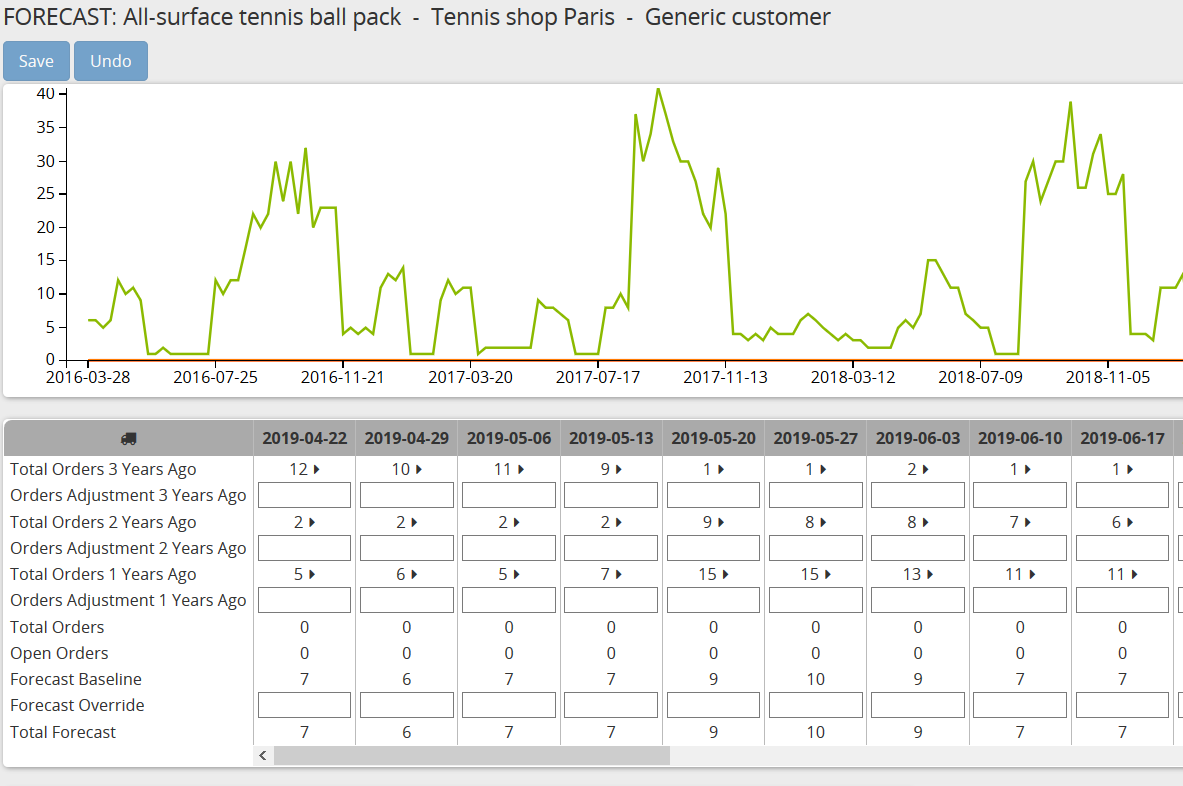The forecast module goes open source

Seat belts fastened ?
Starting from version 8.0, the forecast module is moving to the open source (aka community) version of frePPLe.
What exactly is going open source?
The purpose of the forecast module is to generate a sales forecast based on the demand history, using textbook statistical forecast methods. It goes with a user interface that allows a planning team to review, adjust and collaborate around the demand signal.
The features offered:
- A hierarchical modelling of the item, location, customer and time dimensions.
- A user interface to graphically review and edit the forecast at any level of the hierarchy.
- Implementation of time series forecasting methods: single exponential smoothing, double exponential smoothing for trending forecasts, Holt-Winters for seasonal forecast, Croston for intermittent forecasts. Yes, even moving averages.
- Automatic tuning for the parameters of each forecast method and automatic selection of the best-performing method.
- Support for top-down, bottom-up and middle-out forecast calculations.
- Automatic and manual outlier detection and correction.
- Easy import and export of input data and results using CSV or Excel files.
- Technically, this is all backed by:
- A memory resident caching and calculation engine to perform the calculations (coded in C++)
- A scalable database backend (PostgreSQL)
- A flexible web application (coded in Python)
- An extendible and customizable architecture allowing addons
In short, it’s an end-to-end solution that brings forecasting algorithms in an easy-to-use way to business end users. The software is mature and in production use at many of our customers for quite some years.
Here are some links to quickly discover more:
- Online demo of the application: https://demo.frepple.com/Distribution/forecast/editor/
- The github repository: https://github.com/frePPLe/frepple
- Full documentation: https://frepple.com/docs/current/
WATCH our webinar
This topic is covered in our June 8, 2023 webinar
Why does it go open source ?
FrePPLe uses an open core business model. Over 85% of our code is open source and publicly availalable. Some extra features, combined with professional support and implementation services, make up our business model.
We are continuously evaluating and reviewing where to put the boundary between the Community Edition and the Enterprise&Cloud Editions.
The time seems right to bring the forecast module into the open source world.
Indeed, a new generation of forecasting algorithms based on machine learning have recently reshaped the forecasting domain. We believe in these algorithms and we would like to help any team working on these topics by proposing a graphical interface that will allow to review, edit and modify the forecast in a natural way.
To boost the adoption of the forecast module, we are now releasing the source code under the permissive MIT license. You are free to use, copy, modify, merge publish, distribute, sublicense and sell copies of the software. It’s all yours, enjoy !